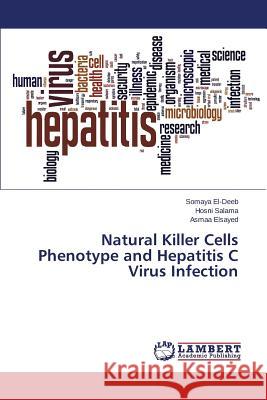Natural Killer Cells Phenotype and Hepatitis C Virus Infection » książka
Natural Killer Cells Phenotype and Hepatitis C Virus Infection
ISBN-13: 9783659788031 / Angielski / Miękka / 2015 / 136 str.
During the early phases of a hepatitis C virus (HCV) infection, natural killer (NK) cells activation appears to be critical in the innate immune responses that have the potential of clearing the infection. Impaired activity of NK cells has been proposed as a mechanism contributing to viral persistence and chronic infection in HCV infection. We aim to assess the impact of HCV infections on NK cells regarding frequency, and subset distribution. The correlation between the phenotype of NK subsets and the various stages was assayed. Number of total NK cells was significantly reduced and a striking shift in NK subsets, with a marked decrease in the CD56-dim cell fraction compared to CD56-bright cells was identified. The number of Nk cells bearing the inhibitory receptor CD158b(KIR) increased in HCV patients at advanced stages, whereas those bearing activating receptors CD314(NKG2D), CD161 were significantly reduced as compared to normal.
During the early phases of a hepatitis C virus (HCV) infection, natural killer (NK) cells activation appears to be critical in the innate immune responses that have the potential of clearing the infection. Impaired activity of NK cells has been proposed as a mechanism contributing to viral persistence and chronic infection in HCV infection. We aim to assess the impact of HCV infections on NK cells regarding frequency, and subset distribution. The correlation between the phenotype of NK subsets and the various stages was assayed. Number of total NK cells was significantly reduced and a striking shift in NK subsets, with a marked decrease in the CD56-dim cell fraction compared to CD56-bright cells was identified. The number of Nk cells bearing the inhibitory receptor CD158b(KIR) increased in HCV patients at advanced stages, whereas those bearing activating receptors CD314(NKG2D), CD161 were significantly reduced as compared to normal.











